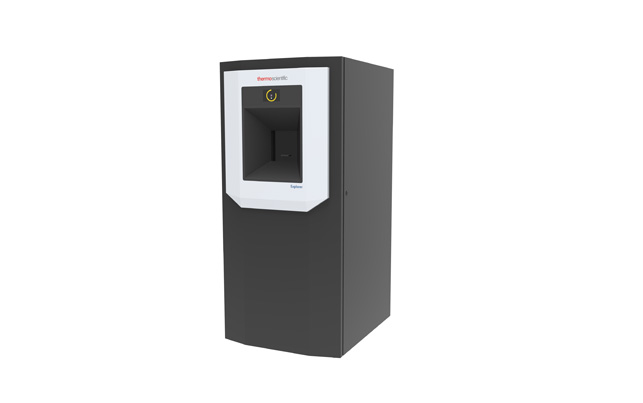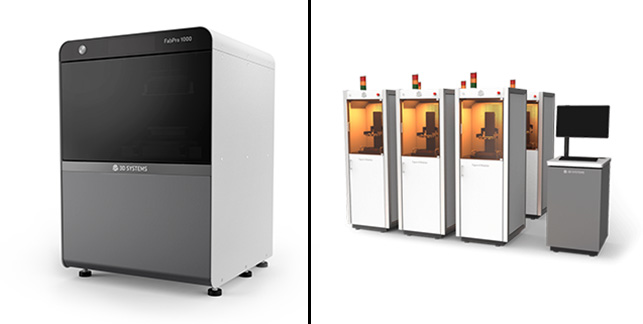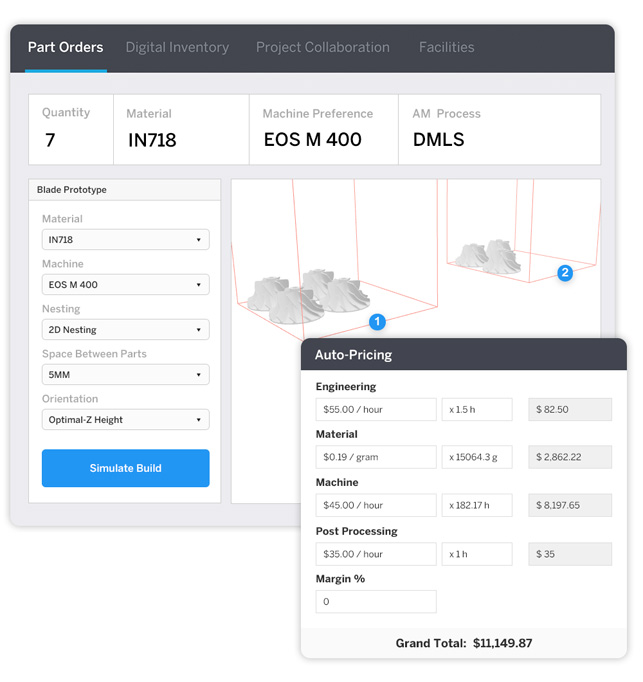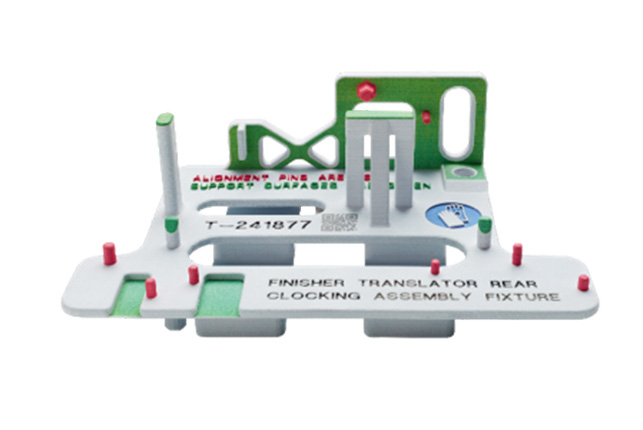
The ability to print colour within functional materials using HP’s MultiJet 3D printing technology opens up a world of added value
1. Colour reborn
HP’s impending colour 3D printing technology is the first to extend the bright hues seen in prototyping into the realm of ready-to-function parts.
Using the same production-grade nylon materials as HP’s existing 3D printers, colour can be added to designs. This could take the form of instructional text on surfaces that provide guidance for parts assembly, for example, or it might be located in sub-surface layers to create ‘smart’ wear gauges on parts, where different colours are revealed as a part wears with use.
Colour might not be at the top of your 3D printing ‘hopes and dreams’ list, but it’s a good indicator of what could be coming down the pipeline from HP in time – such as circuits and sensors printed directly within parts.

The Explore 4 Additive has been designed by Thermo Fisher Scientific for 3D printing materials quality control
2. Qualify and quantify
AMUG 2018 was awash with metals additive manufacturing, and there was no shortage of talks from materials vendors covering the importance of pristine powders.
There was lots of best-practice advice, ranging from how to get the best results when printing in copper to how to use Thermo Fisher Scientific’s range of scanning electron microscopes to identify the ideal spherical powder particles that you want for the best quality metal parts.
The message was clear: What goes in directly impacts what comes out. It’s also vital to what the machine can achieve. While ‘3D Printer X’ can print in a variety of metals, its programming effectively transforms it into a different machine to cater to each metal powder’s characteristics.
Above all, we learnt that particle roundness is key; rogue particle contaminants can really mess up a build; and that recycled powder can still be in top-notch condition when it comes to particle shape.

3D Systems’ sub-$5k FabPro 1000 3D printer runs the same software as its Figure 4 Modular production machine
3. Desktop through to manufacture
Joined-up thinking can sometimes be lacking in 3D printing, especially when it comes to the software side of things.
The importance of getting software right was something we first picked up on a few years ago from Markforged, which had all its printers run the same software, creating a learning experience as users moved up the stack over time and began to use the more sophisticated functions in its top-end machines.
With its new range, 3D Systems has followed suit, so that its sub-$5k FabPro 1000 desktop runs the same 3D Sprint software as its Figure 4 Modular production printer.
This means that designs can be refined and configured at a designer’s desktop before stepping up to volume production levels with increased part accuracy.
Software for 3D printing is slowly being worked directly into the major CAD packages. A good example is 3D Systems’ 3DXpert partnership with SolidWorks. Removing the step of exporting an STL (with its inherent risk of losing important data along the way) makes the design-to-manufacture path an easier route to travel.

The latest EPU 41 material from Carbon adds to its abilities to produce foam replacement lattice structures
4. Foams on the bounce
When Carbon’s lattice generation software, first shown at DEVELOP3D LIVE Boston, is combined with the company’s 3D printing technology and new EPU materials, new foam replacements soon follow. This combination has already been seen, for example, in Adidas’ Futurecraft 4D running shoes.
Given the huge potential market for replacing foams across a variety of industries, this could be a big opportunity for additive manufacturing to outperform other methods on cost and perhaps add value, too.
In a car seat, for example, a smart lattice might use less material bulk than a foam variant and could add custom driver comfort.
Things start to get even smarter when you consider that it might also lead to a reduced sitting height, lowering the roofline of the vehicle and increasing aerodynamic efficiencies, all while replacing current in-seat cooling/heating components with air-based alternatives, blown through the lattice. In other words, there’s far more to all this than bouncy soles.

Software like Link3D’s allows companies to manage their 3D printing ecosystems
5. From end to end
From controlling the ‘digital thread’ to smarter, more automated post-processing, additive manufacturing may finally be getting its act together for large-scale production.
As big businesses begin to delve deeper into 3D printing as a mass manufacturing tool, software from the likes of Authentise, Link3D and Identify3D are hoping to connect up all aspects of the process. And each supplier has its own take on what the digital supply chain looks like, from machine analytics, IP protection and part traceability, to integrating the technology into existing supply chains.
Elsewhere, PostProcess Technologies displayed its latest software to add intelligence, speed and economy to its dedicated machines for the clean-up of parts – the oft-forgotten trudge at the back end of the printing process.
While additive manufacturing might be seen as a key pillar of Industry 4.0, all of this proves that there’s a way to go before it truly breaks out into mass manufacture and that there are a number of challenges still to be overcome.
The five key trends from 2018’s cutting edge 3D Printing user conference
Default






